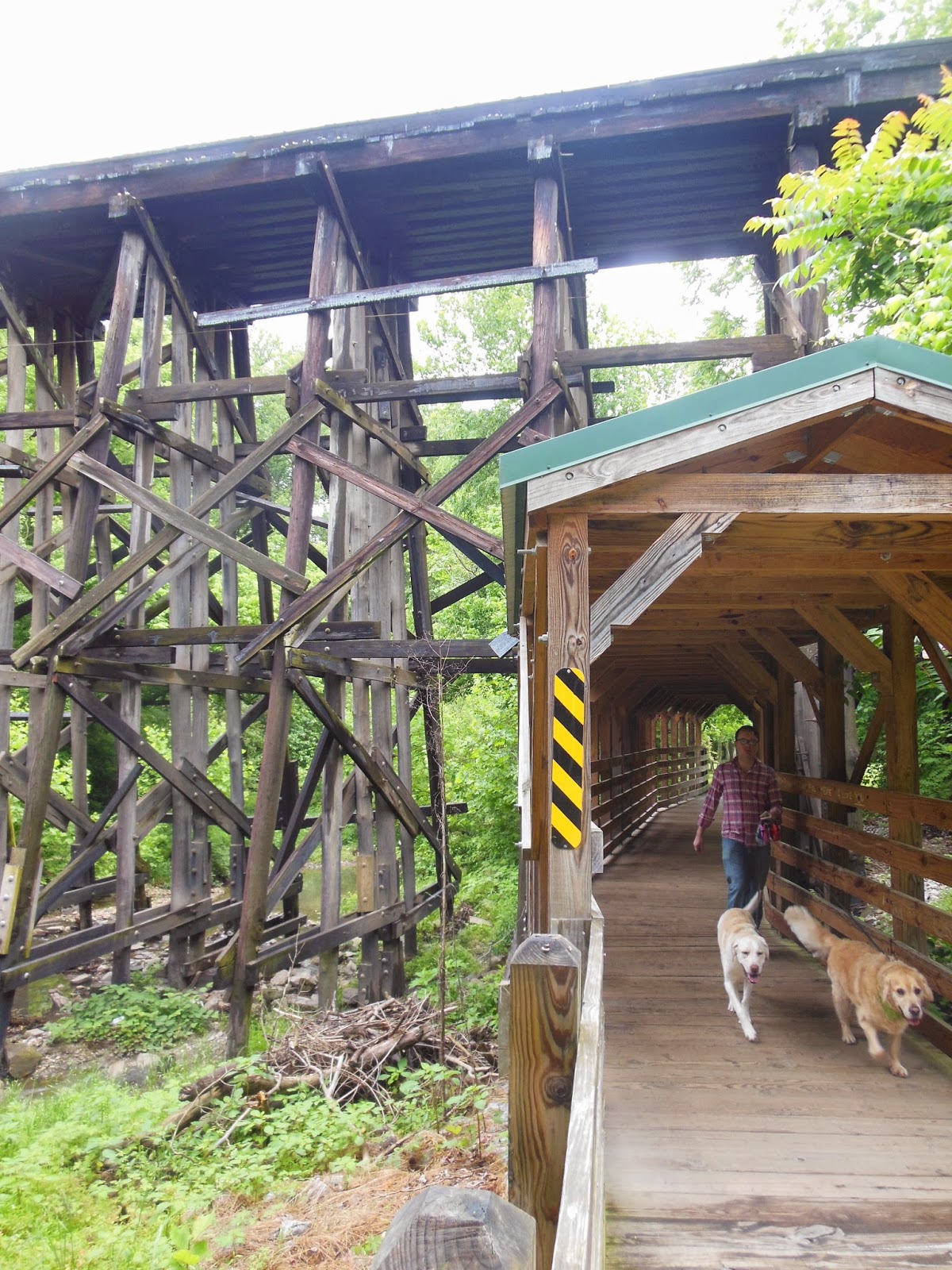 |
| Tanyard Creek Park in Atlanta's Buckhead community |
Yesterday morning, while on a day off from work, I decided
to fill in a hefty gap in my travels to Civil War-related sites in metro
Atlanta.
I drove into Buckhead, a major commercial and residential
district in Atlanta, to walk a portion of the Battle of Peachtree Creek
battlefield and drive through affluent neighborhoods where vicious fighting occurred on July
20, 1864.
Let me tell you: Turning into Tanyard Creek Park is not for
the faint of heart. Commuters and service trucks whizzing along a curvy stretch
of Collier Road don’t give you much time to slow to find or turn into the
entrance.
But once there, I was rewarded with a scenic, narrow park
that is popular with dog walkers, bicyclists and joggers. The creek, Tanyard
Branch, runs north-south in what was the center of the Confederate assault on
Union divisions waiting for them just below the east-west Peachtree Creek.
Near the parking lot and steps leading down to a trail, bronze tablets, installed by the city in 1964, give an overview of the battle and precise details of troop locations and movements. Unfortunately, like many markers and monuments of the time, there is little in the way of the humanity of the story.
You will have to drive north a couple miles to the Atlanta History Center to get that.
A wide, concrete trail part of the ambitious Atlanta
BeltLine transportation and economic development project is the focal point now
of Tanyard Creek Park. Opened in 2010, the trail is considered one of the most
scenic in the BeltLine system.
“The neighborhoods around Collier Hills are now linked by
a continuous mile long trail. The updated trail traverses the Howard Property, ‘Cathedral
Woods,’ and Bobby Jones Golf Course in Atlanta Memorial Park, completing a gap
between the existing trail in Ardmore Park and another that terminates at the
intersection of Northside Drive and Woodward Way,” says the website.
My midday walk was very pleasant. I crossed a couple
bridges and a playground as I gazed up at streets on either side of the
tranquil park. A meadow and the grass were well-maintained.
Not that everyone was thrilled with a trail going through
a battlefield. A letter writer in a
local newspaper in 2007 lamented: “I thought about how beautiful this
park is, and how fitting a tribute it is to the men who lost their lives in the
struggle for it – and then of the reality of how a bike path running through it
would ruin those two things and render it just another piece of city real
estate.”
With hindsight a few years after the trail opened, I am not
sure I agree with his assessment. The trail system and other parts of the
Atlanta BeltLine are bringing a strong sense of community and direction to many
of the city’s neighborhoods. And the park is beautiful.
 |
| The scene and grave markers after Peachtree Creek |
Still, I had a hard time imagining the scene of
Confederate troops under Gens. William Hardee and Alexander Stewart hurrying
into battle.
Hood had taken command of the Confederate Army of
Tennessee just two days earlier after President Jefferson Davis had sacked
Joseph E. Johnston, who had waged a defensive strategy against William T.
Sherman. That strategy had resulted in the army’s gradual retreat from North
Georgia to the vital city’s defenses, and Davis was convinced Johnston might
give up Atlanta itself without much of a fight.
Hood, known as a fierce fighter, modified Johnston’s plan
to attack Maj. Gen. George Thomas’ Army of the Cumberland near Peachtree Creek.
 |
| A marker on busy Collier Road in Buckhead. |
The men in gray began the assault mid-afternoon on July 20 and things got tough quickly. The
hilly terrain and ravines made communication and coordination difficult.
An About.com article provides this account: “While Major General William Bate's division on the Confederate right
became lost in the Peachtree Creek bottomlands, Major General W.H.T. Walker's
men assaulted Union troops led by Brigadier General John Newton. In a series of
piecemeal attacks, Walker's men were repeatedly repulsed by Newton's division.
On Hardee's left, Cheatham's Division, led by Brigadier General George Maney,
made little headway against Newton's right. Further west, Stewart's corps
slammed into Hooker's men who were caught without entrenchments and not fully
deployed. Though pressing the attack, the divisions of Major Generals William
Loring and Edward Walthall lacked the strength to break through XX Corps.”
Stewart continued the attacks, but Hardee
canceled one by Maj. Gen. Patrick Cleburne when Hardee decided to aid
Confederate cavalry elsewhere. Hardee was later criticized for his corps’
performance.
After leaving the park, I drove along several streets where the fighting and troop movements occurred: Northside Drive, Howell Mill Road and Wilson Road. While there are a few monuments amid the high-end neighborhoods, it’s the geography of the place that is most telling. The hills and ravines played to the advantage of the defenders – in this case, the Federals – at Peachtree Creek.
 |
| Train trestle in Tanyard Creek Park |







This comment has been removed by the author.
ReplyDeleteA resident in the area told me that the city had originally proposed to tear down a bunch of trees in the park. The citizens rose up, hired their own professional arborist, and were able to prove to the city tha many of the trees could be saved.
ReplyDeleteMy great grandfather lost an arm in Tanyard Park during the Civil War. After the war he married a much younger woman who had one child before his death. That child was my grandfather.
ReplyDelete